Mudpuppies
- March 12, 2024
- 0 comment
Mudpuppies, intriguing amphibians often shrouded in mystery and misconceptions, are a fascinating topic for exploration. These aquatic salamanders, belonging to the genus Necturus, play a crucial role in their ecosystems and captivate those who study them or stumble upon them by chance. This article aims to shed light on mudpuppies, covering their characteristics, habitat, diet, reproduction, and the challenges they face in the wild.
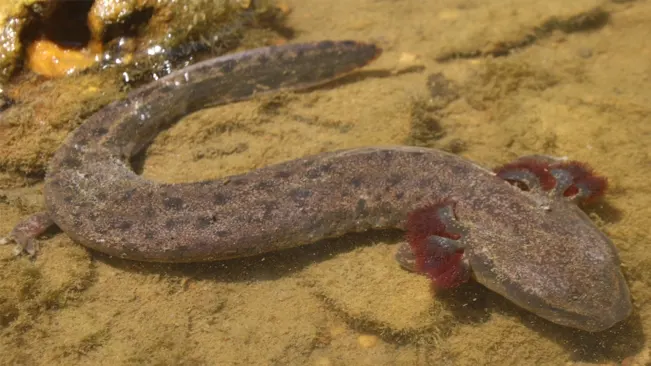
| Category | Details |
|---|---|
| Scientific Name | Necturus spp. |
| Common Names | Mudpuppy, Waterdog |
| Classification | Kingdom: Animalia, Phylum: Chordata, Class: Amphibia, Order: Urodela, Family: Proteidae |
| Size | Typically 8 to 19 inches in length, depending on the species |
| Weight | Varies with size, generally up to a few pounds |
| Lifespan | Generally 10 to 20 years in the wild, potentially longer in captivity |
| Habitat | Freshwater environments like lakes, rivers, and ponds with muddy or rocky bottoms |
| Distribution | North America, from southern Canada through parts of the United States to northern Mexico |
| Diet | Carnivorous, feeding on small fish, insects, worms, and other invertebrates |
| Behavior | Nocturnal; remains hidden under rocks or debris during the day. Utilizes external gills for breathing in aquatic environments |
| Reproduction | Lays eggs in secluded underwater locations in late winter or early spring. Some species display parental care by guarding eggs |
| Conservation Status | Not globally endangered, but some species face threats from habitat destruction, pollution, and invasive species |
| Conservation Efforts | Habitat protection, pollution control, and research on population dynamics and ecology. Some species are monitored for conservation purposes. |
| Cultural Significance | Not commonly known for cultural significance, but valued in scientific and educational communities for their unique biology and role in ecosystem health |
| Challenges | Maintaining clean, oxygen-rich water habitats, combating habitat destruction, and addressing pollution and invasive species are significant challenges for mudpuppy conservation |
Characteristics
Mudpuppies (also known as waterdogs) are notable for their permanent larval stage, a condition known as neoteny. Unlike many amphibians that undergo metamorphosis from larval to adult forms, mudpuppies retain larval characteristics, such as external gills, throughout their lives. These feathery red gills, protruding from the sides of their heads, are a distinctive feature and essential for their aquatic lifestyle. Mudpuppies can grow to be about 8 to 19 inches long, with a robust, slightly flattened body adapted to their underwater environment. Their skin is smooth and covered in a mucus layer that aids in oxygen absorption, with colors ranging from brownish to grayish, often with dark spots or bands.
Neoteny
Neoteny is a distinctive trait observed in all mudpuppy species, where they retain juvenile features, such as external gills, into their adulthood. This unique developmental process means that mudpuppies do not undergo the typical amphibian metamorphosis, allowing them to remain fully aquatic and breathe underwater throughout their entire lives.

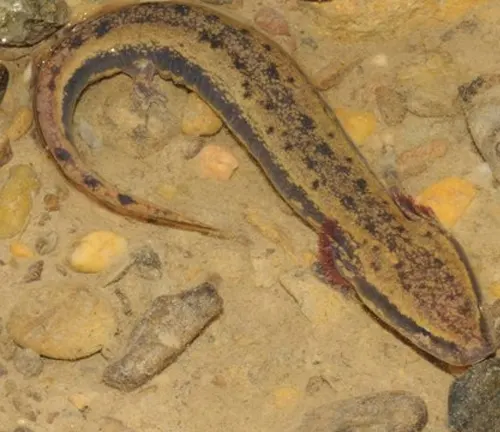
External gills
are a hallmark feature of mudpuppies, characterized by their vibrant, feathery red appearance that protrudes from the sides of their heads. These gills are crucial for their survival, as they enable the mudpuppies to breathe by exchanging gases directly with the surrounding water, allowing them to remain submerged and active in their aquatic habitats.
Body Size
The body size of mudpuppies can significantly vary, ranging from about 8 to 19 inches in length, influenced by the specific species and the conditions of individual growth. This variation highlights the diversity within the genus Necturus, with some species naturally growing larger than others, and environmental factors such as diet and habitat quality playing crucial roles in determining the overall size of these aquatic salamanders.

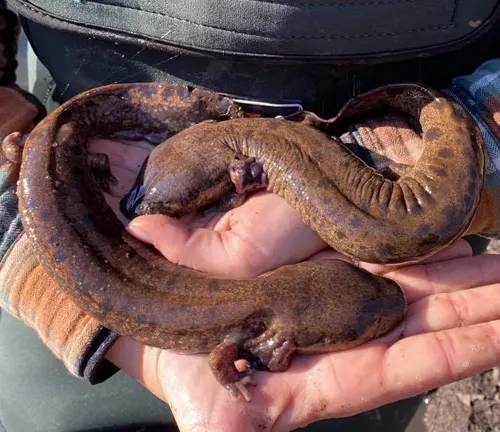
Body Shape and Skin
Mudpuppies possess a robust, slightly flattened body suitable for an aquatic lifestyle. Their skin is smooth, covered in a mucus layer to aid in oxygen absorption, and typically features colors ranging from brownish to grayish with potential dark spots or bands.
Habitat
Mudpuppies, the aquatic salamanders native to North America, inhabit a variety of freshwater environments ranging from the clear, cold waters of Canada down to select regions in the United States. They thrive in settings that offer abundant shelter, including lakes, rivers, and ponds characterized by rocky or muddy substrates where they can easily conceal themselves.

Fully committed to an aquatic lifestyle, mudpuppies rarely venture onto land, preferring instead the safety of underwater hideouts like the undersides of rocks or within the protection of submerged logs and debris. Their activity peaks during the night, contributing to their elusive nature. This nocturnal behavior, combined with their preference for staying hidden, makes mudpuppies a fascinating yet often unseen component of their ecosystems, quietly contributing to the biodiversity and health of freshwater habitats.
Diet
Mudpuppies, with their carnivorous appetites, engage in a dietary regimen that encompasses a wide array of aquatic organisms, feeding on everything from small fish and insects to worms and various other invertebrates that inhabit their freshwater realms. These salamanders employ an ambush strategy when it comes to hunting, often remaining motionless and camouflaged within their underwater habitats, waiting for an unsuspecting prey to venture close enough to capture.

This method of predation allows them to conserve energy while maximizing their chances of a successful hunt. The specific diet of a mudpuppy can greatly vary depending on several factors, including the individual’s size and age, as well as the seasonal availability of prey within their environment. Larger mudpuppies are capable of tackling more substantial prey, while younger individuals may focus on smaller, more manageable targets. This adaptability in their diet reflects the mudpuppy’s ability to thrive in a variety of aquatic conditions, ensuring their survival across the diverse freshwater landscapes of North America.
Reproduction
Mudpuppies engage in an annual breeding cycle, typically laying eggs in late winter or early spring. The females deposit eggs under rocks or in other secluded spots, where they remain to guard them until hatching.
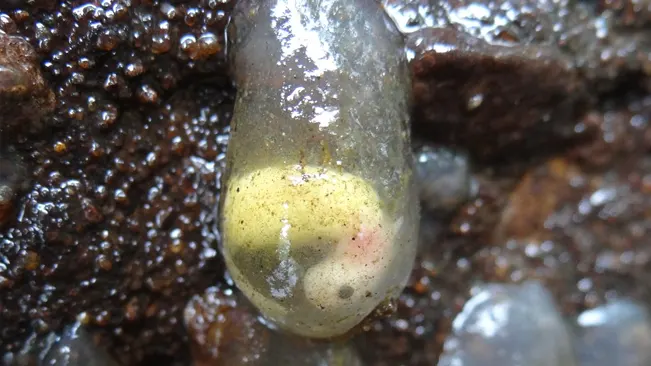
This parental investment is relatively rare among amphibians and highlights the mudpuppy’s unique approach to reproduction. The number of eggs can vary significantly, ranging from a few dozen to over a hundred, depending on the size and age of the female.
Behavior
Nocturnal Activity
Mudpuppies are primarily active at night. During the day, they often remain hidden under rocks or debris to avoid predators and reduce energy expenditure.
Aquatic Lifestyle
They are fully aquatic and spend their entire lives in water, rarely if ever venturing onto land.
External Gills for Breathing
Their prominent external gills, which they retain throughout their lives, allow for oxygen exchange directly from the water, highlighting their adaptation to an aquatic environment.
Ambush Predators
Mudpuppies primarily feed by ambushing prey. They stay motionless and wait for an unsuspecting victim, such as small fish or invertebrates, to come close enough to capture.
Winter Breeding
Unlike many amphibians that breed in spring or summer, mudpuppies often breed in late fall or winter. This timing can vary depending on the local climate and water temperature.
Egg Guarding
Female mudpuppies exhibit parental care by guarding their eggs until they hatch, which is relatively rare among amphibians.
Social Interaction
While not highly social, mudpuppies may aggregate in favorable habitats or during breeding seasons, indicating some level of social interaction.
Vocalizations
Although less common than in other amphibian species, mudpuppies can produce sounds. These are usually soft grunts or squeaks, particularly during the breeding season.
Sensitive to Environmental Changes
Mudpuppies are sensitive to changes in their aquatic environments, such as pollution or temperature shifts, which can affect their behavior and survival.
Limited Territoriality
While they do not fiercely defend territories, mudpuppies have preferred habitats and hiding spots which they regularly use for shelter and hunting.
Conservation Status
While mudpuppies are not currently listed as endangered on a global scale, their populations face threats from habitat destruction, pollution, and the introduction of invasive species. Their reliance on clean, oxygen-rich water makes them vulnerable to environmental changes. Conservation efforts are essential to ensure the survival of mudpuppies, involving habitat protection, pollution control, and public education to dispel myths that may lead to unnecessary killing of these harmless amphibians.
Different Species
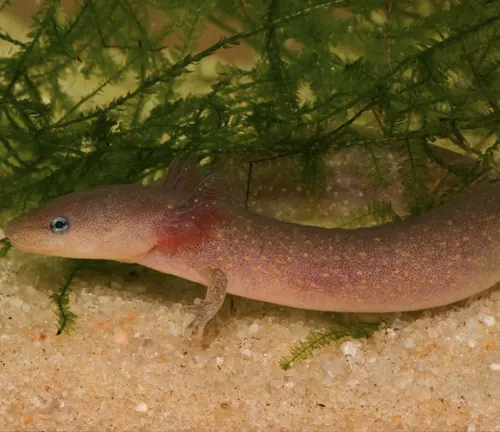
Common Mudpuppy (Necturus maculosus)
The most widely recognized species, the common mudpuppy can be found across a large part of North America, from southern Canada through the eastern United States. They are noted for their dark spots and can live in a variety of freshwater habitats.
Dwarf Waterdog (Necturus punctatus)
Found in the southeastern United States, particularly in coastal plains from Virginia to Alabama, the dwarf waterdog is smaller than the common mudpuppy and has a more streamlined body.

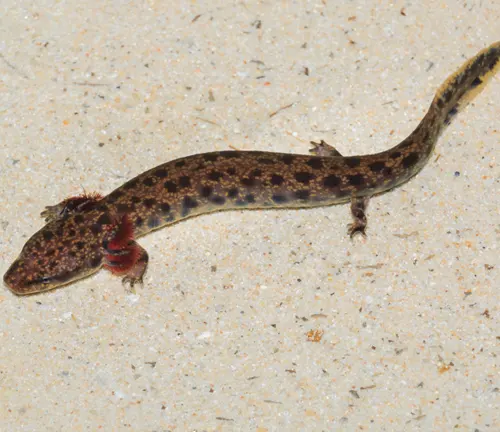
Alabama Waterdog (Necturus alabamensis)
This species is endemic to Alabama, particularly in the Mobile Bay basin. It is considered rare and is of conservation concern due to its limited range.
Gulf Coast Waterdog (Necturus beyeri)
As the name suggests, this species resides in the Gulf Coast region, spanning from Louisiana to the Florida Panhandle. It is known for its distinctive coloration and pattern.
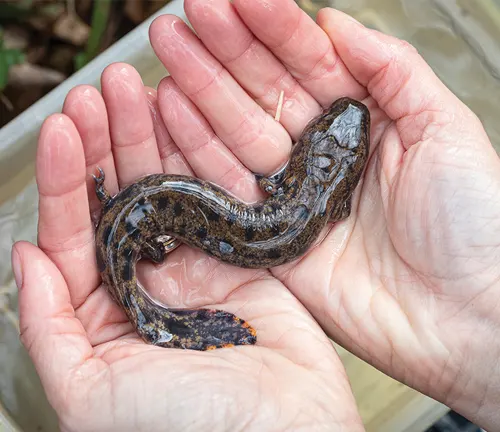

Neuse River Waterdog (Necturus lewisi)
This species is found exclusively in the Neuse and Tar River systems in North Carolina. It has a limited distribution and faces threats from habitat degradation and pollution.
Conclusion
Mudpuppies, with their fascinating biology and crucial ecological role, are a testament to the diversity and complexity of aquatic ecosystems. Their presence indicates healthy waterways, serving as a barometer for environmental quality. By understanding and appreciating mudpuppies, we can take steps to protect these remarkable creatures and the habitats they depend on, ensuring their survival for generations to come.
Frequently Asked Questions (FAQs)
- What are Mudpuppies?
Mudpuppies are aquatic salamanders known for their unique feature of retaining their larval gills throughout their entire lives, a condition known as neoteny. - Why are they called Mudpuppies?
The name “Mudpuppy” is thought to originate from the mistaken belief that they make a dog-like barking sound underwater. However, they are actually mostly silent creatures. - Can Mudpuppies live out of water?
No, Mudpuppies are fully aquatic and cannot survive out of water for extended periods due to their reliance on external gills for oxygen exchange. - What do Mudpuppies eat?
Mudpuppies are carnivorous, feeding on small fish, worms, snails, and other invertebrates they find in their aquatic environment. - How do Mudpuppies breathe?
They breathe through external gills, which allow them to extract oxygen directly from the water. Unlike many other amphibians, they do not lose these gills as they mature. - How long do Mudpuppies live?
Mudpuppies can live for 10 to 20 years in the wild, and some have been known to live longer in captivity with proper care. - Are Mudpuppies dangerous?
No, Mudpuppies pose no danger to humans. They are non-venomous and generally shy, preferring to avoid contact with humans. - Where can Mudpuppies be found?
They are native to North America, found in freshwater lakes, rivers, and ponds, primarily in the eastern United States and parts of Canada. - What threats do Mudpuppies face?
Their main threats include habitat destruction, pollution, and the introduction of invasive species that compete for resources or prey on them. - How can we help conserve Mudpuppies?
Conservation efforts include protecting their natural habitats, reducing pollution, supporting sustainable land and water use practices, and participating in or supporting amphibian research and conservation programs.


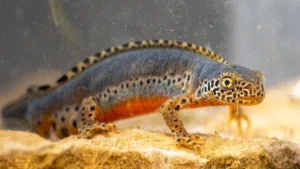
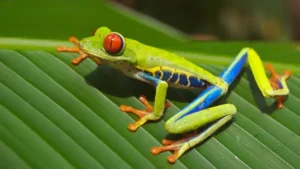
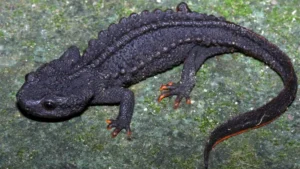
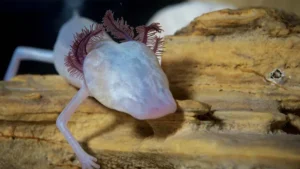
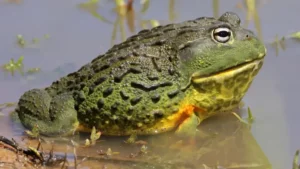
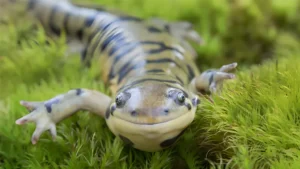

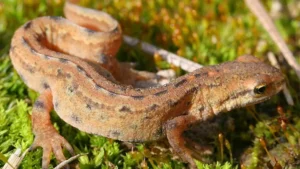
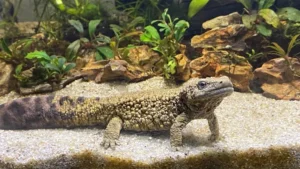
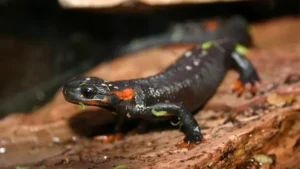

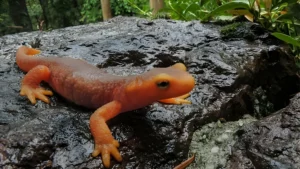
Leave your comment